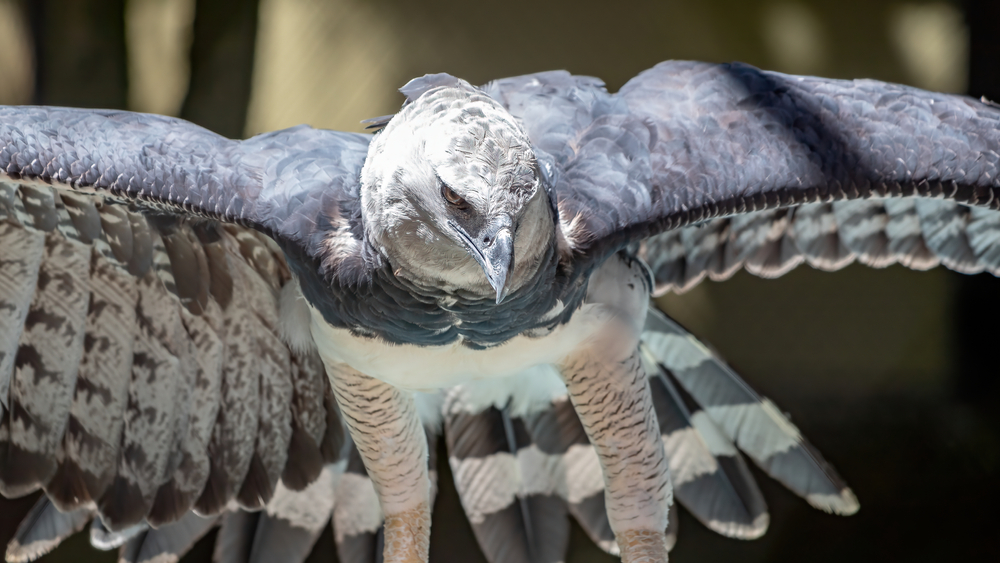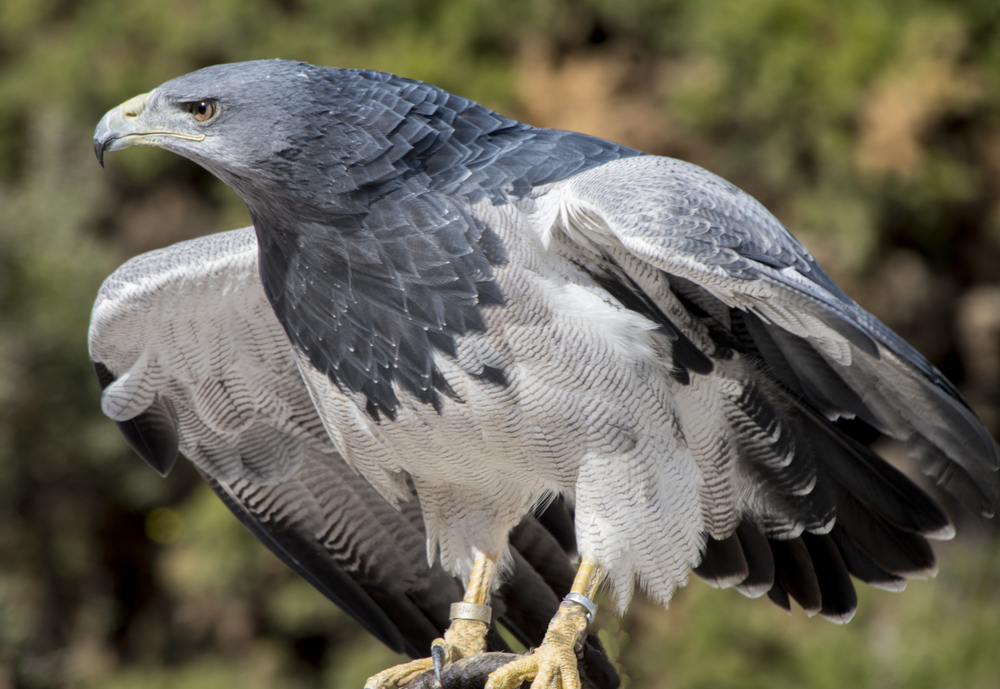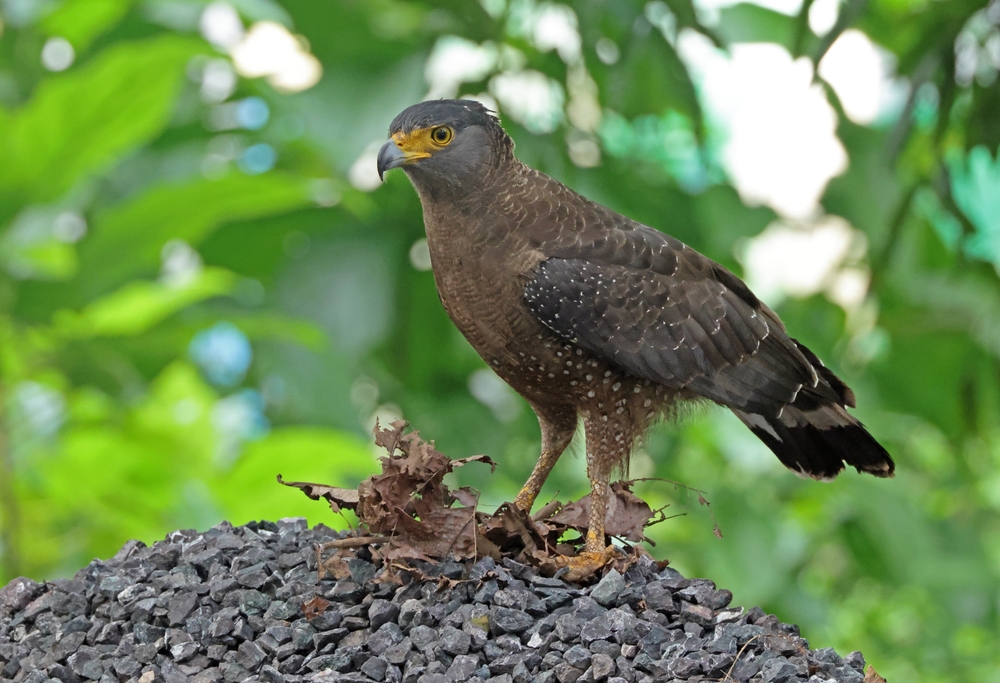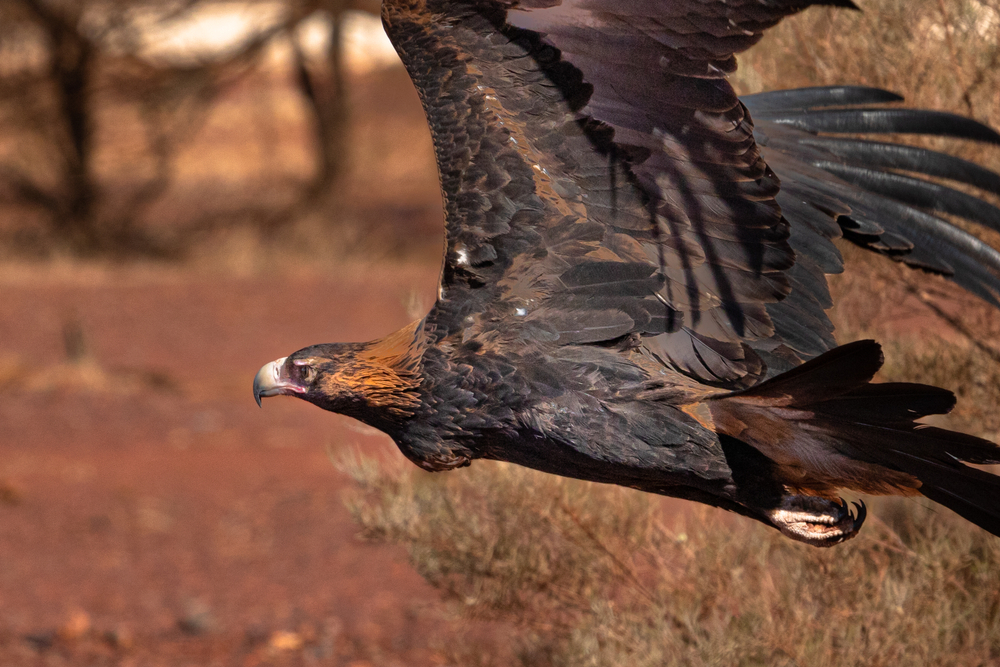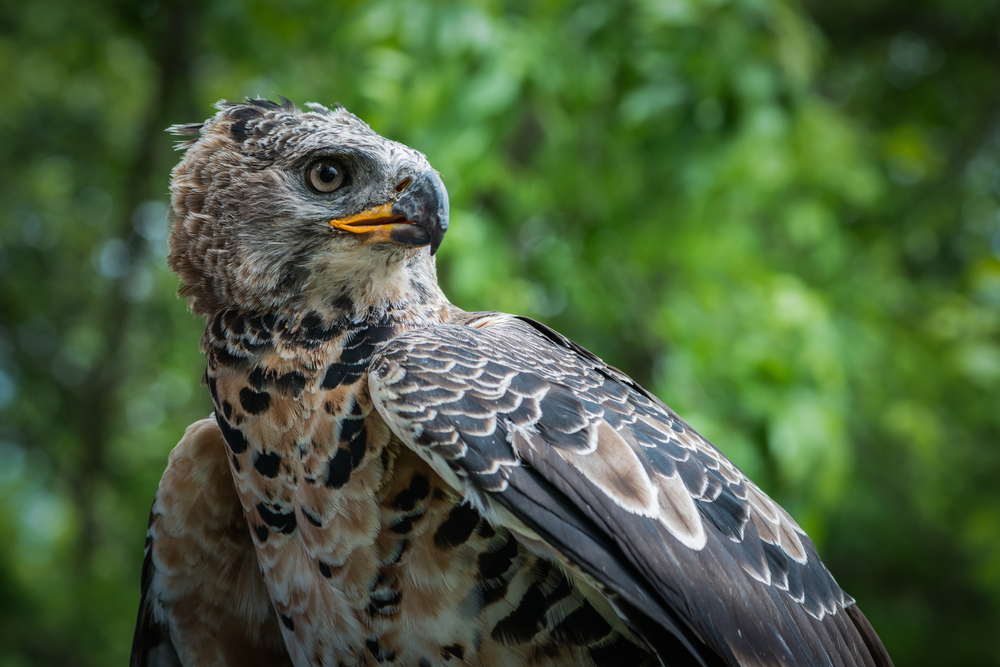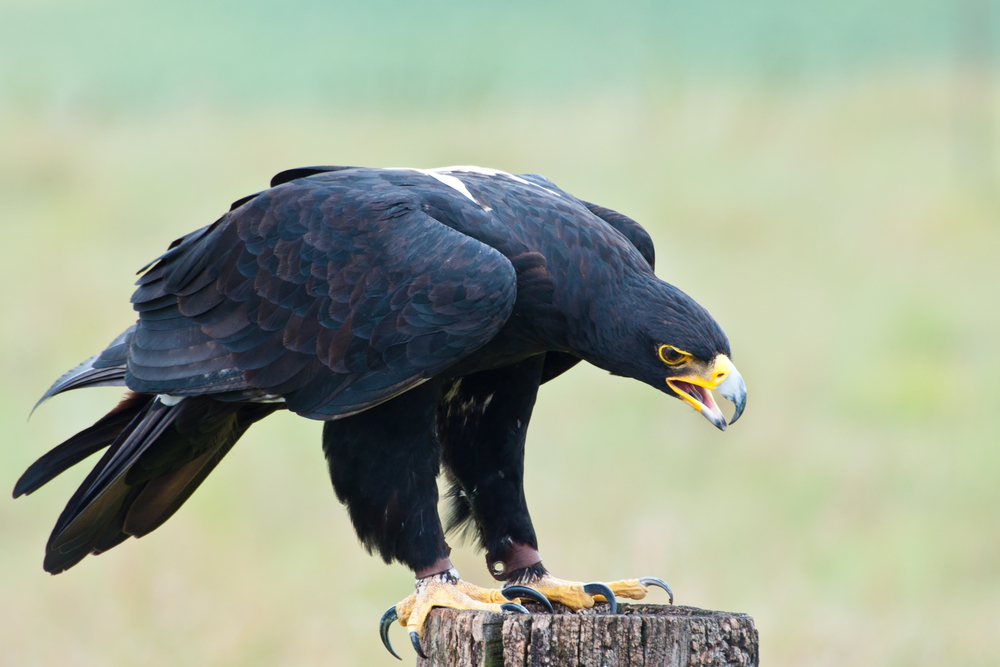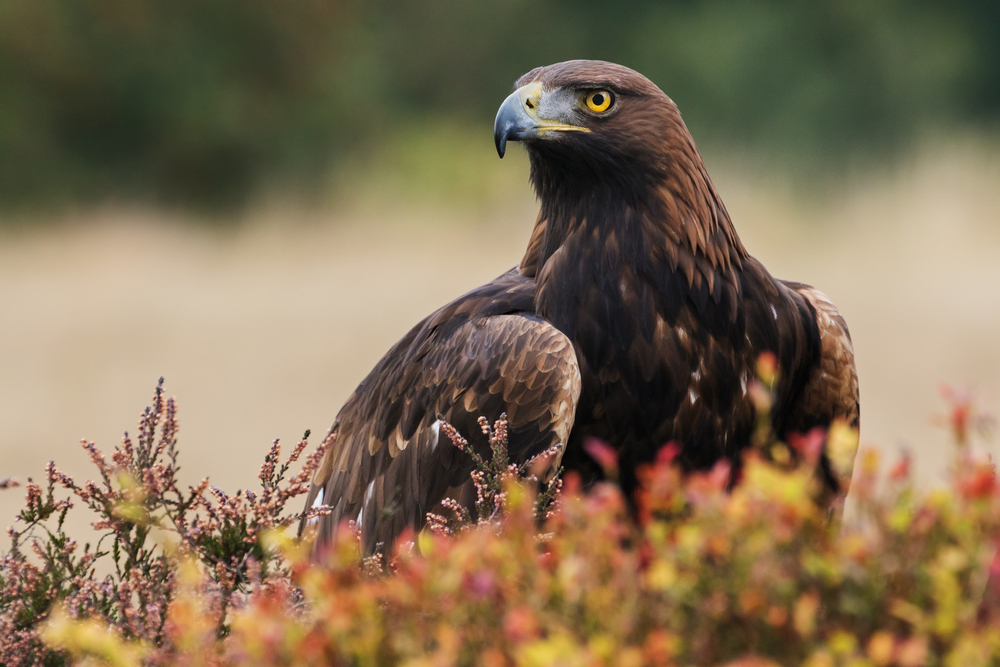The Harpy Eagle’s closest relatives are other large tropical forest eagles within the subfamily Aquilinae, particularly the Crowned Eagle (Stephanoaetus coronatus) of Africa and the Philippine Eagle (Pithecophaga jefferyi) of Southeast Asia. All three are apex predators specializing in hunting large prey in dense forests.
About
The Harpy Eagle is one of the largest and most powerful raptors in the world, and the most iconic eagle of the tropical Americas. Ranging from southern Mexico through Central America into South America, it inhabits lowland rainforests, where its strength and stealth make it the apex predator of the canopy. With its enormous talons, striking facial disk, and dramatic feathered crest, the Harpy Eagle is instantly recognizable and widely regarded as a symbol of wilderness power.
This eagle measures 86–107 cm (34–42 in) in length, with an incredible wingspan of 176–224 cm (5.7–7.4 ft). Females, the larger of the sexes, may weigh up to 9 kg (20 lbs). Despite their massive size, Harpy Eagles have relatively short, broad wings and long tails, which allow them to maneuver nimbly through dense forest cover. Their primary prey includes medium-sized arboreal mammals such as monkeys, sloths, and opossums, though they will also hunt large birds and reptiles.
Breeding pairs construct huge stick nests high in emergent trees, often reusing the same site for years. The female typically lays two eggs, though usually only one chick is raised successfully. With a long parental care period, chicks fledge after about 6 months but may remain dependent for more than a year, meaning pairs generally breed only once every 2–3 years. In the wild, Harpy Eagles can live up to 25–35 years.
The scientific name of the Harpy Eagle is Harpia harpyja, and it belongs to the family Accipitridae, which includes hawks, kites, and other eagles. While still found across a wide range, the species has declined in many areas due to deforestation and habitat loss, particularly in Central America. Conservation efforts focus on rainforest preservation and community education. The Harpy Eagle stands as both a formidable hunter and a living emblem of tropical forest ecosystems.
Physical Characteristics
The Harpy Eagle (Harpia harpyja) is one of the largest and most powerful raptors in the world, renowned for its massive talons, striking crest, and dominance in tropical forests of Central and South America.
Plumage:
Adults have dark gray to black upperparts with white underparts. The breast bears a broad black band across the chest, contrasting with the white belly. The tail is long and gray, marked with broad black bands. Juveniles are paler, gradually developing the bold adult pattern over several years.
Head and Face:
They have a large head with a distinctive double crest of black feathers, which can be raised into a crown-like shape. Their face is pale gray, with a sharply hooked black beak and intense pale gray eyes.
Body and Wings:
Harpy Eagles are heavily built, with broad wings adapted for powerful, short bursts of flight in dense forests. Their wings are relatively short for their size, enhancing maneuverability among trees. The long tail provides balance and agility.
Size:
-
Length (Body): 34 to 41 in (86 to 105 cm)
-
Wingspan: 69 to 86 in (176 to 220 cm)
-
Tail Length: 14 to 16 in (36 to 41 cm)
Weight:
-
Males: 10 to 14 lbs (4.5 to 6.5 kg)
-
Females: 15 to 20 lbs (7 to 9 kg), among the heaviest of all eagles.
Talons:
Their talons are among the largest and strongest of any eagle, comparable in size to a grizzly bear’s claws, capable of exerting crushing force to kill monkeys, sloths, and other large prey.
The Harpy Eagle’s massive build, bold crest, and powerful talons make it one of the most formidable and iconic raptors in the world.
Reproduction
The Harpy Eagle has one of the slowest reproductive cycles among raptors, with pairs investing years into raising a single chick.
1. Mating and Courtship:
Harpy Eagles are monogamous and form lifelong pair bonds. Courtship involves mutual soaring, vocalizations, and nest-building displays. Pairs defend large territories within dense tropical forests.
2. Nesting:
Nests are massive structures, often 4 to 5 feet (1.2 to 1.5 m) across and up to 3 feet (1 m) deep, built high in emergent trees such as kapoks. Fresh greenery is added regularly to line the nest.
3. Egg-Laying:
The female usually lays 1 to 2 eggs, but generally raises only one chick per nesting cycle. If two eggs are laid, the second is typically ignored after the first hatches.
4. Incubation:
Incubation lasts about 55 to 60 days, with the female doing most of the sitting while the male provides food.
5. Raising Chicks:
The chick hatches covered in down and is brooded closely in the first weeks. Both parents provide food, mainly monkeys, sloths, and other medium-sized mammals. The young grows rapidly, developing full flight feathers by five to six months.
6. Fledging and Independence:
Chicks fledge at around 5 to 6 months of age, but remain dependent on parents for food for up to 1 year. Because of this long dependency, pairs usually breed only once every 2 to 3 years.
The Harpy Eagle’s reproductive cycle—low clutch size, long incubation, and extended care—ensures strong survival chances for its single chick but makes the species vulnerable to population decline.
Lifespan
The Harpy Eagle is a long-lived apex predator, with survival tied to intact tropical forests and stable prey populations.
Lifespan in the Wild:
In their natural rainforest habitats, Harpy Eagles typically live 25 to 30 years, though some may reach up to 35 yearsunder favorable conditions. Juvenile mortality is high, with young eagles vulnerable during their first years of independence as they develop hunting skills.
Lifespan in Captivity:
In zoos and conservation centers, Harpy Eagles can live 35 to 40 years, thanks to consistent veterinary care, reliable food sources, and protection from hunting and habitat loss.
Threats to the Harpy Eagle:
-
Deforestation: Loss of tropical forests reduces nesting sites and prey availability.
-
Hunting and Persecution: In some regions, they are shot due to fear of predation on livestock or for trophies.
-
Slow Reproduction: Only one chick is raised every 2 to 3 years, making population recovery very slow.
-
Prey Decline: Reduction in monkeys, sloths, and other prey species impacts breeding success.
-
Human Encroachment: Expanding agriculture and logging bring conflict and habitat fragmentation.
Care and Protection:
Conservation efforts include forest protection, community education, captive breeding programs, and ecotourism initiatives that promote the Harpy Eagle as a flagship species for rainforest preservation.
The Harpy Eagle’s long lifespan, combined with slow reproduction and habitat dependence, makes it both a symbol of tropical forests and highly vulnerable to human pressures.
Eating Habits
The Harpy Eagle is one of the most powerful raptors in the world, with a diet centered on large arboreal mammals of the tropical forest canopy.
Diet:
Their primary prey includes monkeys (such as howlers, capuchins, and spider monkeys) and sloths, which form the bulk of their diet. They also hunt opossums, iguanas, large birds, and occasionally young deer.
Hunting Strategy:
Harpy Eagles are ambush predators, relying on stealth and explosive power rather than long pursuits. They perch silently in the canopy, scanning for movement below, then launch short, powerful flights to seize prey.
Killing Technique:
They use their enormous talons—the largest of any eagle—to pierce and crush the bones or skulls of prey, often killing instantly. Their grip strength is reputed to be several times that of a human hand.
Feeding Behavior:
Large kills are often taken to a perch or nest and consumed over several days. Prey is torn apart with their hooked beak, and parents deliver carefully portioned meals to chicks during nesting.
Special Considerations:
-
Prey Specialization: Heavy reliance on monkeys and sloths ties their survival to healthy forest ecosystems.
-
Energy Efficiency: By hunting large prey, they reduce the need to hunt frequently, sometimes feeding on a single animal for multiple days.
-
Role in Ecosystem: As apex predators, Harpy Eagles help regulate populations of canopy mammals, maintaining forest balance.
The Harpy Eagle’s specialized diet, immense talons, and ambush tactics make it one of the most formidable hunters of the tropical rainforest canopy.
Uniqueness
The Harpy Eagle is one of the most iconic raptors in the world, celebrated for its immense power, striking appearance, and role as a symbol of tropical forests.
Largest Talons of Any Eagle:
Harpy Eagles possess enormous talons, up to 5 in (13 cm) long, rivaling a grizzly bear’s claws in size. These talons allow them to seize and kill prey much larger than themselves.
Formidable Power:
Relative to size, the Harpy Eagle is considered the most powerful eagle in the world, capable of lifting prey equal to its own weight, including monkeys and sloths.
Distinctive Crest:
Its bold double crest of black feathers, raised when alarmed or displaying, gives it a dramatic, almost mythical appearance.
Forest Specialist:
Unlike soaring eagles of open landscapes, the Harpy Eagle is a dense forest specialist, using its short, broad wings and long tail to maneuver through thick canopy in pursuit of prey.
Cultural Significance:
In many indigenous cultures of Central and South America, the Harpy Eagle is revered as a symbol of strength, majesty, and guardianship of the forest. It is also the national bird of Panama.
The Harpy Eagle’s combination of immense strength, bold crest, forest specialization, and cultural reverence makes it one of the most unique and awe-inspiring raptors on Earth.
Be the First to Share Photos of This Species.
FAQ’s
1. What is the closest species to the Harpy Eagle?
2. How does the Harpy Eagle compare to other eagles?
The Harpy Eagle is considered the most powerful eagle in the world, with talons larger than a grizzly bear’s claws and a crushing grip that can kill monkeys and sloths instantly.
Unlike open-country eagles such as the Golden or Martial Eagle, it is adapted to forest hunting, with short wings and a long tail for maneuverability in dense canopy. Its bold double crest also makes it visually unique.
3. What national parks provide the best chance to see a Harpy Eagle?
Harpy Eagles inhabit lowland tropical forests of Central and South America. Some of the best national parks to see them include Darien National Park (Panama), Yasuní National Park (Ecuador), Madidi National Park (Bolivia), and Amazonas reserves in Brazil, where they nest in tall emergent trees.



































































